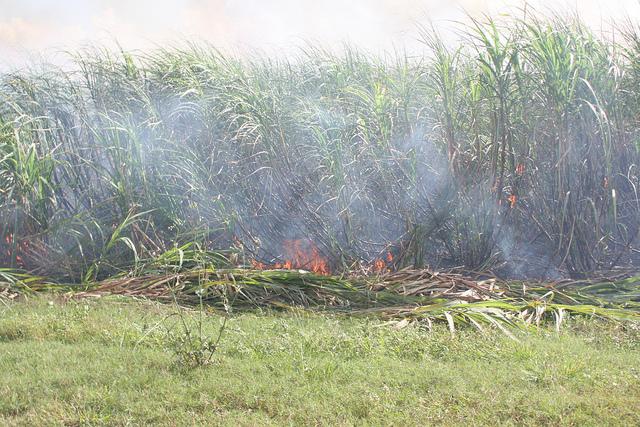Agricultural Pollution
Developing means of farming and agriculture is the reason humans live in the world they do today. It is a necessary means of survival, without which there would be famines all over the world. For thousands of years, agricultural was a natural process that did not harm the land it was done on. In fact, farmers were able to pass down their land for many generations and it would still be fertile as ever. However, modern agricultural practices have started the process of agricultural pollution. This process causes the degradation of the eco-system, land and environment due to the modern day by-products of agriculture.
No single cause can be attributed to the widespread agricultural pollution we face today. Agriculture is a complex activity in which the growth of crops and livestock have to be balanced perfectly. The process of agricultural pollution stems from the many stages their growth goes through.

Causes of Agricultural Pollution
1. Pesticides and Fertilizers: To begin with, the earliest source of the pollution has been pesticides and fertilizers. Modern day pesticides & fertilizers have to deal with the local pests that have existed for hundreds of years along with the new invasive species. And so, they are laden with chemicals that are not found in nature.
Once they has been sprayed, it does not disappear completely. Some of it mixes with the water and seeps into the ground. The rest of is absorbed by the plant itself. As a result, the local streams that are supplied water from the ground become contaminated, as do the animals that eat these crops and plants.
2. Contaminated Water: Contaminated water used for irrigation is one further source of pollution. Much of the water we use comes from ground water reservoirs, canals and through the rains. While plenty of it is clean and pure water, other sources are polluted with organic compounds and heavy metals. This happens due to the disposal of industrial and agricultural waste in local bodies of water.
As a result, the crops are exposed to water which has small amounts of mercury, arsenic, lead and cadmium dissolved in it. The process of agricultural pollution becomes harder to fight when such water poisons the livestock and causes crop failure.
3. Soil Erosion and Sedimentation: Further problems are caused by soil erosion and sedimentation. Soil is comprised of many layers and it is only the topmost layer that can support farming or grazing. Due to inefficient farming practices, this soil is left open for erosion and leads to declining fertility each year. Whether eroded by water or wind, all this soil has to be deposited somewhere or the other.
The resulting sedimentation causes soil build up in areas such as rivers, streams, ditches and surrounding fields. And so, the process of agricultural pollution prevents the natural movement of water, aquatic animals and nutrients to other fertile areas.
4. Livestock: In the olden days, farmers would keep as much livestock as their land could support. The cattle, sheep, pigs, chickens and other animals were fed natural diets, which was supplemented by the waste left over from the crops. As a result, the animals contributed to keeping the farm healthy as well.
As of now, livestock is grown in cramped conditions where it is fed unnatural diets and sent to slaughterhouses on a regular basis. As a result, they add to the process of agricultural pollution by way of emissions.
5. Pests and Weeds: Growing exotic crops and reducing the natural species in a certain area has become the norm for agriculture. However, it is simply adding to the process of agricultural pollution. With the arrival of new crops, the native population has to deal with new diseases, pests and weeds that it is not capable of fighting.
As a result, the invasive species destroy the local vegetation and wildlife, altering the eco-system permanently. This is especially the case with Genetically Modified foods, which create plant and animal species that can wipe out the existing species in a matter of years.
Effects of Agricultural Pollution
1. Health Related Issues: Agricultural pollution is the main source of pollution in water and lakes. Chemicals from fertilizers and pesticides make their way into the groundwater that end up in drinking water. Health related problems may occur as it contribute to blue baby syndrome which causes death in infants. Oil, degreasing agents, metals and toxins from farm equipment cause health problems when they get into drinking water.
2. Effect on Aquatic Animals: Fertilizers, manure, waste and ammonia turns into nitrate that reduces the amount of oxygen present in water which results in the death of many aquatic animals. Again, bacteria and parasites from animal waste can get into drinking water which can pose serious health hazards for various aquatic life and animals.
Keeping agricultural pollution in check is much harder than it seems. For the farms to become clean once again, levels of water, soil and industrial pollution have to be kept in check. Over the last decade or so, governments have become stricter about enforcing regulations. Farmers are also becoming more aware of the damage and are looking for solutions.
Many farms are moving back to traditional manure, direct irrigation from local water bodies and organic means of keeping pest populations in check. But for the process of agricultural pollution to be fully reigned in, there has to be a complete shift in the way agriculture is practiced.

